Image retrieval using ViT model.
Abstract:
Query by Image Content (QBIC), subsequently known as Content-Based Image Retrieval (CBIR), offers an advantageous solution in a variety of applications, including medical...Show MoreMetadata
Abstract:
Query by Image Content (QBIC), subsequently known as Content-Based Image Retrieval (CBIR), offers an advantageous solution in a variety of applications, including medical, meteorological, search by image, and other applications. Such CBIR systems primarily use similarity matching algorithms to compare image content to get matched images from datasets. They essentially measure the spatial distance between extracted visual features from a query image and its similar versions in the dataset. One of the most challenging query retrieval problems is Facial Sketched-Real Image Retrieval (FSRIR), which is based on content similarity matching. These facial retrieval systems are employed in a variety of contexts, including criminal justice. The difficulties of retrieving such sorts come from the composition of the human face and its distinctive parts. In addition, the comparison between these types of images is made within two different domains. Besides, to our knowledge, there is a few large-scale facial datasets that can be used to assess the performance of the retrieval systems. The success of the retrieval process is governed by the method used to estimate similarity and the efficient representation of compared images. However, by effectively representing visual features, the main challenge-posing component of such systems might be resolved. Hence, this paper has several contributions that fill the research gap in content-based similarity matching and retrieval. The first contribution is extending the Chinese University Face Sketch (CUFS) dataset by including augmented images, introducing to the community a novel dataset named Extended Sketched-Real Image Retrieval (ESRIR). The CUFS dataset has been extended from 100 images to include 53,000 facial sketches and 53,000 real facial images. The paper second contribution is presenting three new systems for sketched-real image retrieval based on convolutional autoencoder, InfoGAN, and Vision Transformer (ViT) unsupervised mode...
Image retrieval using ViT model.
Published in: IEEE Access ( Volume: 11)
Funding Agency:
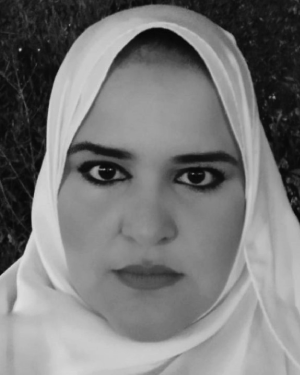
Department of Communications and Computers Engineering, Higher Institute of Engineering, El-Shorouk Academy, El-Shorouk, Egypt
Eman S. Sabry was born in Cairo, Egypt. She received the B.Sc. degree (Hons.) in electronics and electrical communication engineering from the Higher Institute of Engineering, El Shorouk Academy, and the M.Sc. degree from the Faculty of Engineering, Arab Academy for Science, Technology, and Maritime Transport, in 2016. She is currently working as a Teaching Assistant at the Higher Institute of Engineering, El Shorouk Acad...Show More
Eman S. Sabry was born in Cairo, Egypt. She received the B.Sc. degree (Hons.) in electronics and electrical communication engineering from the Higher Institute of Engineering, El Shorouk Academy, and the M.Sc. degree from the Faculty of Engineering, Arab Academy for Science, Technology, and Maritime Transport, in 2016. She is currently working as a Teaching Assistant at the Higher Institute of Engineering, El Shorouk Acad...View more
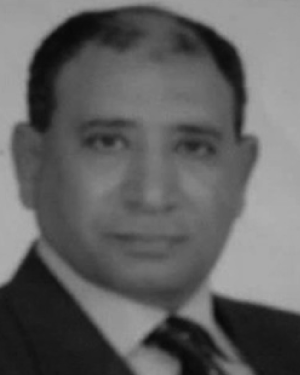
Department of Communications and Computers Engineering, Higher Institute of Engineering, El-Shorouk Academy, El-Shorouk, Egypt
Salah S. Elagooz received the B.Sc. and M.Sc. form MTC, Cairo, Egypt, in 1981 and 1987, respectively, and the Ph.D. degree in efficient communication systems from GWU, Washington, DC, USA, in 1993. He is currently the Head of Communications and Computer Engineering Department, El-Shorouk High Engineering Institute. His areas of interest are mobile and satellite communication systems, channel coding, and encryption.
Salah S. Elagooz received the B.Sc. and M.Sc. form MTC, Cairo, Egypt, in 1981 and 1987, respectively, and the Ph.D. degree in efficient communication systems from GWU, Washington, DC, USA, in 1993. He is currently the Head of Communications and Computer Engineering Department, El-Shorouk High Engineering Institute. His areas of interest are mobile and satellite communication systems, channel coding, and encryption.View more
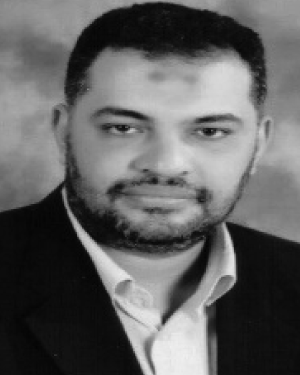
Department of Electronics and Electrical Communications Engineering, Faculty of Electronic Engineering, Menoufia University, Menouf, Egypt
Fathi E. Abd El-Samie received the B.Sc. (Hons.), M.Sc., and Ph.D. degrees from the Faculty of Electronic Engineering, Menoufia University, Menouf, Egypt, in 1998, 2001, and 2005, respectively. He joined the Teaching Staff of the Department of Electronics and Electrical Communications, Faculty of Electronic Engineering, Menoufia University, in 2005. His current research interests include image enhancement, image restorati...Show More
Fathi E. Abd El-Samie received the B.Sc. (Hons.), M.Sc., and Ph.D. degrees from the Faculty of Electronic Engineering, Menoufia University, Menouf, Egypt, in 1998, 2001, and 2005, respectively. He joined the Teaching Staff of the Department of Electronics and Electrical Communications, Faculty of Electronic Engineering, Menoufia University, in 2005. His current research interests include image enhancement, image restorati...View more
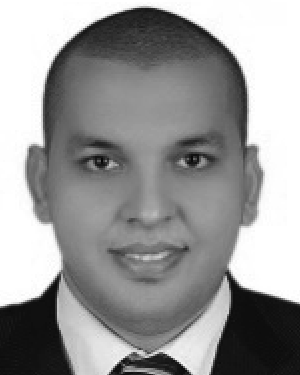
Department of Electronics and Electrical Communications Engineering, Faculty of Electronic Engineering, Menoufia University, Menouf, Egypt
Computer Science Department, Security Engineering Laboratory, Prince Sultan University, Riyadh, Saudi Arabia
Walid El-Shafai was born in Alexandria, Egypt. He received the B.Sc. degree (Hons.) in electronics and electrical communication engineering from the Faculty of Electronic Engineering (FEE), Menoufia University, Menouf, Egypt, in 2008, the M.Sc. degree from the Egypt–Japan University of Science and Technology (E-JUST), in 2012, and the Ph.D. degree from the Faculty of Electronic Engineering, Menoufia University, in 2019. S...Show More
Walid El-Shafai was born in Alexandria, Egypt. He received the B.Sc. degree (Hons.) in electronics and electrical communication engineering from the Faculty of Electronic Engineering (FEE), Menoufia University, Menouf, Egypt, in 2008, the M.Sc. degree from the Egypt–Japan University of Science and Technology (E-JUST), in 2012, and the Ph.D. degree from the Faculty of Electronic Engineering, Menoufia University, in 2019. S...View more
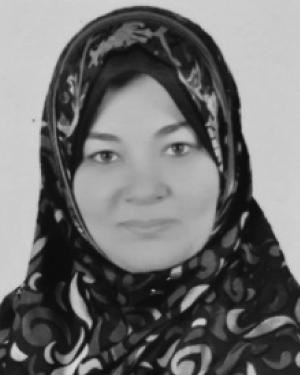
Computer Science and Engineering Department, Faculty of Electronic Engineering, Menoufia University, Menouf, Egypt
Nirmeen A. El-Bahnasawy received the B.S. degree in electronic engineering, in 1998, and the M.Sc. and Ph.D. degrees in computer science and engineering from Menoufia University, in 2003 and 2013, respectively. She was appointed as an Associate Professor at Menoufia University, in 2019. She has deep experience in dealing with electronics H/W kits, different software tools, and different programming languages. She did and ...Show More
Nirmeen A. El-Bahnasawy received the B.S. degree in electronic engineering, in 1998, and the M.Sc. and Ph.D. degrees in computer science and engineering from Menoufia University, in 2003 and 2013, respectively. She was appointed as an Associate Professor at Menoufia University, in 2019. She has deep experience in dealing with electronics H/W kits, different software tools, and different programming languages. She did and ...View more
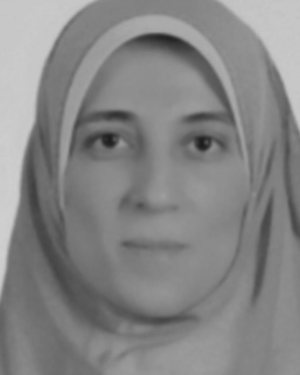
Department of Industrial Electronics and Control Engineering, Faculty of Electronic Engineering, Menoufia University, Menouf, Egypt
Ghada M. El-Banby received the M.Sc. and Ph.D. degrees in automatic control engineering from Menoufia University, Egypt, in 2006 and 2012, respectively. She is currently working as an Associate Professor at the Department of Industrial Electronics and Control Engineering, Faculty of Electronic Engineering, Menoufia University. Her current research interests include computer vision, data fusion, image processing, signal pr...Show More
Ghada M. El-Banby received the M.Sc. and Ph.D. degrees in automatic control engineering from Menoufia University, Egypt, in 2006 and 2012, respectively. She is currently working as an Associate Professor at the Department of Industrial Electronics and Control Engineering, Faculty of Electronic Engineering, Menoufia University. Her current research interests include computer vision, data fusion, image processing, signal pr...View more
Department of Information Technology, College of Computer and Information Sciences, Princess Nourah bint Abdulrahman University, Riyadh, Saudi Arabia
Abeer D. Algarni received the B.Sc. degree (Hons.) in computer science from King Saud University, Riyadh, Saudi Arabia, in 2007, and the M.Sc. and Ph.D. degrees from the School of Engineering and Computer Sciences, Durham University, U.K., in 2010 and 2015, respectively. She has been working as an Assistant Professor at the College of Computer and Information Sciences, Princess Nourah bint Abdulrahman University, since 20...Show More
Abeer D. Algarni received the B.Sc. degree (Hons.) in computer science from King Saud University, Riyadh, Saudi Arabia, in 2007, and the M.Sc. and Ph.D. degrees from the School of Engineering and Computer Sciences, Durham University, U.K., in 2010 and 2015, respectively. She has been working as an Assistant Professor at the College of Computer and Information Sciences, Princess Nourah bint Abdulrahman University, since 20...View more
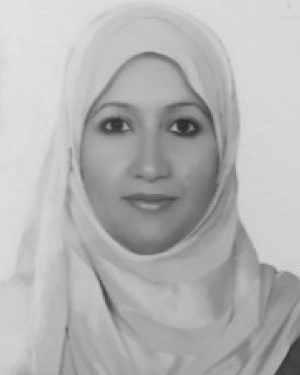
Department of Information Technology, College of Computer and Information Sciences, Princess Nourah bint Abdulrahman University, Riyadh, Saudi Arabia
Naglaa F. Soliman received the B.Sc., M.Sc., and Ph.D. degrees from the Faculty of Engineering, Zagazig University, Egypt, in 1999, 2004, and 2011, respectively. She worked at the Faculty of Computer Science, PNU, Saudi Arabia. Her current research interests include digital image processing, information security, multimedia communications, medical image processing, optical signal processing, big data, and cloud computing.
Naglaa F. Soliman received the B.Sc., M.Sc., and Ph.D. degrees from the Faculty of Engineering, Zagazig University, Egypt, in 1999, 2004, and 2011, respectively. She worked at the Faculty of Computer Science, PNU, Saudi Arabia. Her current research interests include digital image processing, information security, multimedia communications, medical image processing, optical signal processing, big data, and cloud computing.View more
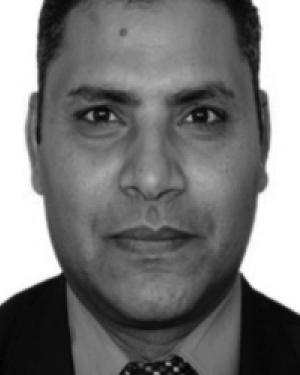
Computer Engineering Department, College of Engineering, Cairo University, Giza, Egypt
Rabie A. Ramadan (Member, IEEE) graduated from Alazhar University. He received the dual master’s degrees from Cairo University and Southern Methodist University (SMU), Dallas, TX, USA, and the Ph.D. degree from the Computer Science and Engineering Department, SMU. He currently works as a Full Professor at the Computer Engineering Department, Cairo University, and is on leave from the College of Computer Science and Engine...Show More
Rabie A. Ramadan (Member, IEEE) graduated from Alazhar University. He received the dual master’s degrees from Cairo University and Southern Methodist University (SMU), Dallas, TX, USA, and the Ph.D. degree from the Computer Science and Engineering Department, SMU. He currently works as a Full Professor at the Computer Engineering Department, Cairo University, and is on leave from the College of Computer Science and Engine...View more

Department of Communications and Computers Engineering, Higher Institute of Engineering, El-Shorouk Academy, El-Shorouk, Egypt
Eman S. Sabry was born in Cairo, Egypt. She received the B.Sc. degree (Hons.) in electronics and electrical communication engineering from the Higher Institute of Engineering, El Shorouk Academy, and the M.Sc. degree from the Faculty of Engineering, Arab Academy for Science, Technology, and Maritime Transport, in 2016. She is currently working as a Teaching Assistant at the Higher Institute of Engineering, El Shorouk Academy. She has competence utilizing Python to create current deep learning models across a variety of phases and applications. She also has experience in communication systems, microwave, antenna, optical signal processing, electronics, image and video compression, cloud computing, multimedia processing, and other areas. She also has expertise in developing and processing IP networks, such as IPTV, using OPNET and various network simulators. Her current research interests include artificial intelligence, deep learning, generative adversarial networks (GAN), vision transformer, capsule networks, data analysis, image processing, and retrieval.
Eman S. Sabry was born in Cairo, Egypt. She received the B.Sc. degree (Hons.) in electronics and electrical communication engineering from the Higher Institute of Engineering, El Shorouk Academy, and the M.Sc. degree from the Faculty of Engineering, Arab Academy for Science, Technology, and Maritime Transport, in 2016. She is currently working as a Teaching Assistant at the Higher Institute of Engineering, El Shorouk Academy. She has competence utilizing Python to create current deep learning models across a variety of phases and applications. She also has experience in communication systems, microwave, antenna, optical signal processing, electronics, image and video compression, cloud computing, multimedia processing, and other areas. She also has expertise in developing and processing IP networks, such as IPTV, using OPNET and various network simulators. Her current research interests include artificial intelligence, deep learning, generative adversarial networks (GAN), vision transformer, capsule networks, data analysis, image processing, and retrieval.View more

Department of Communications and Computers Engineering, Higher Institute of Engineering, El-Shorouk Academy, El-Shorouk, Egypt
Salah S. Elagooz received the B.Sc. and M.Sc. form MTC, Cairo, Egypt, in 1981 and 1987, respectively, and the Ph.D. degree in efficient communication systems from GWU, Washington, DC, USA, in 1993. He is currently the Head of Communications and Computer Engineering Department, El-Shorouk High Engineering Institute. His areas of interest are mobile and satellite communication systems, channel coding, and encryption.
Salah S. Elagooz received the B.Sc. and M.Sc. form MTC, Cairo, Egypt, in 1981 and 1987, respectively, and the Ph.D. degree in efficient communication systems from GWU, Washington, DC, USA, in 1993. He is currently the Head of Communications and Computer Engineering Department, El-Shorouk High Engineering Institute. His areas of interest are mobile and satellite communication systems, channel coding, and encryption.View more

Department of Electronics and Electrical Communications Engineering, Faculty of Electronic Engineering, Menoufia University, Menouf, Egypt
Fathi E. Abd El-Samie received the B.Sc. (Hons.), M.Sc., and Ph.D. degrees from the Faculty of Electronic Engineering, Menoufia University, Menouf, Egypt, in 1998, 2001, and 2005, respectively. He joined the Teaching Staff of the Department of Electronics and Electrical Communications, Faculty of Electronic Engineering, Menoufia University, in 2005. His current research interests include image enhancement, image restoration, image interpolation, super resolution reconstruction of images, data hiding, multimedia communications, medical image processing, optical signal processing, and digital communications. He has received the Most Cited Paper Award from Digital Signal Processing journal, in 2008.
Fathi E. Abd El-Samie received the B.Sc. (Hons.), M.Sc., and Ph.D. degrees from the Faculty of Electronic Engineering, Menoufia University, Menouf, Egypt, in 1998, 2001, and 2005, respectively. He joined the Teaching Staff of the Department of Electronics and Electrical Communications, Faculty of Electronic Engineering, Menoufia University, in 2005. His current research interests include image enhancement, image restoration, image interpolation, super resolution reconstruction of images, data hiding, multimedia communications, medical image processing, optical signal processing, and digital communications. He has received the Most Cited Paper Award from Digital Signal Processing journal, in 2008.View more

Department of Electronics and Electrical Communications Engineering, Faculty of Electronic Engineering, Menoufia University, Menouf, Egypt
Computer Science Department, Security Engineering Laboratory, Prince Sultan University, Riyadh, Saudi Arabia
Walid El-Shafai was born in Alexandria, Egypt. He received the B.Sc. degree (Hons.) in electronics and electrical communication engineering from the Faculty of Electronic Engineering (FEE), Menoufia University, Menouf, Egypt, in 2008, the M.Sc. degree from the Egypt–Japan University of Science and Technology (E-JUST), in 2012, and the Ph.D. degree from the Faculty of Electronic Engineering, Menoufia University, in 2019. Since January 2021, he has been a Postdoctoral Research Fellow at the Security Engineering Laboratory (SEL), Prince Sultan University (PSU), Riyadh, Saudi Arabia. He is currently working as a Lecturer and an Assistant Professor with the Electronics and Communication Engineering (ECE) Department, FEE, Menoufia University. His research interests include wireless mobile and multimedia communications systems, image and video signal processing, efficient 2-D video/3-D multi-view video coding, multi-view video plus depth coding, 3-D multi-view video coding and transmission, quality of service and experience, digital communication techniques, cognitive radio networks, adaptive filters design, 3-D video watermarking, steganography, and encryption, error resilience and concealment algorithms for H.264/AVC, H.264/MVC, and H.265/HEVC video codecs standards, cognitive cryptography, medical image processing, speech processing, security algorithms, software-defined networks, the Internet of Things, medical diagnoses applications, FPGA implementations for signal processing algorithms and communication systems, cancellable biometrics and pattern recognition, image and video magnification, artificial intelligence for signal processing algorithms and communication systems, modulation identification and classification, image and video super-resolution and denoising, cybersecurity applications, malware and ransomware detection and analysis, deep learning in signal processing, and communication systems applications. He has several publications in the above research areas in several reputable international and local journals and conferences. He serves as a reviewer for several international journals.
Walid El-Shafai was born in Alexandria, Egypt. He received the B.Sc. degree (Hons.) in electronics and electrical communication engineering from the Faculty of Electronic Engineering (FEE), Menoufia University, Menouf, Egypt, in 2008, the M.Sc. degree from the Egypt–Japan University of Science and Technology (E-JUST), in 2012, and the Ph.D. degree from the Faculty of Electronic Engineering, Menoufia University, in 2019. Since January 2021, he has been a Postdoctoral Research Fellow at the Security Engineering Laboratory (SEL), Prince Sultan University (PSU), Riyadh, Saudi Arabia. He is currently working as a Lecturer and an Assistant Professor with the Electronics and Communication Engineering (ECE) Department, FEE, Menoufia University. His research interests include wireless mobile and multimedia communications systems, image and video signal processing, efficient 2-D video/3-D multi-view video coding, multi-view video plus depth coding, 3-D multi-view video coding and transmission, quality of service and experience, digital communication techniques, cognitive radio networks, adaptive filters design, 3-D video watermarking, steganography, and encryption, error resilience and concealment algorithms for H.264/AVC, H.264/MVC, and H.265/HEVC video codecs standards, cognitive cryptography, medical image processing, speech processing, security algorithms, software-defined networks, the Internet of Things, medical diagnoses applications, FPGA implementations for signal processing algorithms and communication systems, cancellable biometrics and pattern recognition, image and video magnification, artificial intelligence for signal processing algorithms and communication systems, modulation identification and classification, image and video super-resolution and denoising, cybersecurity applications, malware and ransomware detection and analysis, deep learning in signal processing, and communication systems applications. He has several publications in the above research areas in several reputable international and local journals and conferences. He serves as a reviewer for several international journals.View more

Computer Science and Engineering Department, Faculty of Electronic Engineering, Menoufia University, Menouf, Egypt
Nirmeen A. El-Bahnasawy received the B.S. degree in electronic engineering, in 1998, and the M.Sc. and Ph.D. degrees in computer science and engineering from Menoufia University, in 2003 and 2013, respectively. She was appointed as an Associate Professor at Menoufia University, in 2019. She has deep experience in dealing with electronics H/W kits, different software tools, and different programming languages. She did and supervised different H/W and S/W implementation projects. Her research interests include distributed computing, grid computing, IoT, artificial intelligence, fog computing, and cloud computing.
Nirmeen A. El-Bahnasawy received the B.S. degree in electronic engineering, in 1998, and the M.Sc. and Ph.D. degrees in computer science and engineering from Menoufia University, in 2003 and 2013, respectively. She was appointed as an Associate Professor at Menoufia University, in 2019. She has deep experience in dealing with electronics H/W kits, different software tools, and different programming languages. She did and supervised different H/W and S/W implementation projects. Her research interests include distributed computing, grid computing, IoT, artificial intelligence, fog computing, and cloud computing.View more

Department of Industrial Electronics and Control Engineering, Faculty of Electronic Engineering, Menoufia University, Menouf, Egypt
Ghada M. El-Banby received the M.Sc. and Ph.D. degrees in automatic control engineering from Menoufia University, Egypt, in 2006 and 2012, respectively. She is currently working as an Associate Professor at the Department of Industrial Electronics and Control Engineering, Faculty of Electronic Engineering, Menoufia University. Her current research interests include computer vision, data fusion, image processing, signal processing, medical imaging, modeling, and control.
Ghada M. El-Banby received the M.Sc. and Ph.D. degrees in automatic control engineering from Menoufia University, Egypt, in 2006 and 2012, respectively. She is currently working as an Associate Professor at the Department of Industrial Electronics and Control Engineering, Faculty of Electronic Engineering, Menoufia University. Her current research interests include computer vision, data fusion, image processing, signal processing, medical imaging, modeling, and control.View more
Department of Information Technology, College of Computer and Information Sciences, Princess Nourah bint Abdulrahman University, Riyadh, Saudi Arabia
Abeer D. Algarni received the B.Sc. degree (Hons.) in computer science from King Saud University, Riyadh, Saudi Arabia, in 2007, and the M.Sc. and Ph.D. degrees from the School of Engineering and Computer Sciences, Durham University, U.K., in 2010 and 2015, respectively. She has been working as an Assistant Professor at the College of Computer and Information Sciences, Princess Nourah bint Abdulrahman University, since 2008. Her current research interests include networking and communication systems, digital image processing, digital communications, and cyber security.
Abeer D. Algarni received the B.Sc. degree (Hons.) in computer science from King Saud University, Riyadh, Saudi Arabia, in 2007, and the M.Sc. and Ph.D. degrees from the School of Engineering and Computer Sciences, Durham University, U.K., in 2010 and 2015, respectively. She has been working as an Assistant Professor at the College of Computer and Information Sciences, Princess Nourah bint Abdulrahman University, since 2008. Her current research interests include networking and communication systems, digital image processing, digital communications, and cyber security.View more

Department of Information Technology, College of Computer and Information Sciences, Princess Nourah bint Abdulrahman University, Riyadh, Saudi Arabia
Naglaa F. Soliman received the B.Sc., M.Sc., and Ph.D. degrees from the Faculty of Engineering, Zagazig University, Egypt, in 1999, 2004, and 2011, respectively. She worked at the Faculty of Computer Science, PNU, Saudi Arabia. Her current research interests include digital image processing, information security, multimedia communications, medical image processing, optical signal processing, big data, and cloud computing.
Naglaa F. Soliman received the B.Sc., M.Sc., and Ph.D. degrees from the Faculty of Engineering, Zagazig University, Egypt, in 1999, 2004, and 2011, respectively. She worked at the Faculty of Computer Science, PNU, Saudi Arabia. Her current research interests include digital image processing, information security, multimedia communications, medical image processing, optical signal processing, big data, and cloud computing.View more

Computer Engineering Department, College of Engineering, Cairo University, Giza, Egypt
Rabie A. Ramadan (Member, IEEE) graduated from Alazhar University. He received the dual master’s degrees from Cairo University and Southern Methodist University (SMU), Dallas, TX, USA, and the Ph.D. degree from the Computer Science and Engineering Department, SMU. He currently works as a Full Professor at the Computer Engineering Department, Cairo University, and is on leave from the College of Computer Science and Engineering, Hail University, Hail, Saudi Arabia. He has led many of the research projects in the fields of AI and smart technologies. He also works with many of the leading industrial partners around the world. He worked with Vodafone telecommunication operators, Intel, Samrtec, Microsoft, CERN, and CISCO Academy. He is the Founder of many AI research laboratories, including FABLAB Hail and Brain–Computer Interface (BCI) Laboratories. He also has a distinguished publication record in sensing technologies, including sensor networks and the Internet of Things (IoT). He is the Co-Founder of the Ambient Intelligent Center (AMIC), German University in Cairo (GUC). He also has a fruitful cooperation effort with the Fraunhofer Institute, Germany. He utilized AI techniques in security, personalized shopping, powered assistants, fraud prevention, administrative tasks automated to aid educators, creating smart content, voice assistants, personalized learning, and autonomous vehicles. He also secured funds for many research projects. He also maintained funding from different agencies for his projects and publications. He secured funds up to (U.S. $30,742,859) from different organizations, including NTRA, FP7, ITEA, Hail University, and MTI University.
Rabie A. Ramadan (Member, IEEE) graduated from Alazhar University. He received the dual master’s degrees from Cairo University and Southern Methodist University (SMU), Dallas, TX, USA, and the Ph.D. degree from the Computer Science and Engineering Department, SMU. He currently works as a Full Professor at the Computer Engineering Department, Cairo University, and is on leave from the College of Computer Science and Engineering, Hail University, Hail, Saudi Arabia. He has led many of the research projects in the fields of AI and smart technologies. He also works with many of the leading industrial partners around the world. He worked with Vodafone telecommunication operators, Intel, Samrtec, Microsoft, CERN, and CISCO Academy. He is the Founder of many AI research laboratories, including FABLAB Hail and Brain–Computer Interface (BCI) Laboratories. He also has a distinguished publication record in sensing technologies, including sensor networks and the Internet of Things (IoT). He is the Co-Founder of the Ambient Intelligent Center (AMIC), German University in Cairo (GUC). He also has a fruitful cooperation effort with the Fraunhofer Institute, Germany. He utilized AI techniques in security, personalized shopping, powered assistants, fraud prevention, administrative tasks automated to aid educators, creating smart content, voice assistants, personalized learning, and autonomous vehicles. He also secured funds for many research projects. He also maintained funding from different agencies for his projects and publications. He secured funds up to (U.S. $30,742,859) from different organizations, including NTRA, FP7, ITEA, Hail University, and MTI University.View more

